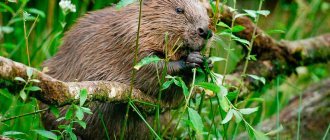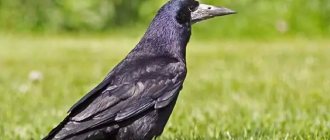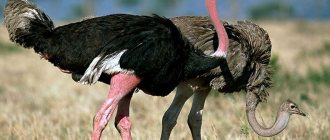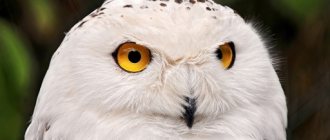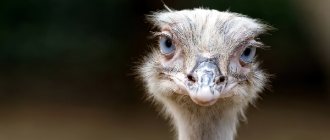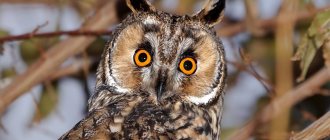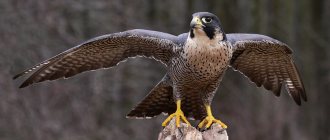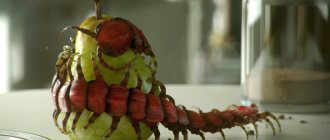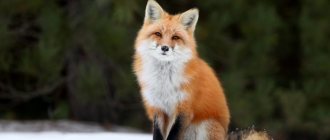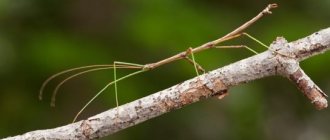- Wild animals
- >>
- Birds
The rook is a bird that brings warmth. This is what people have called it since ancient times, when it was first noticed that with the arrival of rooks, warming occurred in the northern regions. For this reason, the attitude towards rooks is warmer than towards other representatives of the corvid family. Rooks not only mark the arrival of the long-awaited spring, but are also very smart, quick-witted animals. You can verify this personally by studying these birds in more detail, their habits, lifestyle and natural qualities.
Who flies south, the rooks or the crows?
The gray crow from the northern regions of the Soviet Union flies to the southern regions for the winter, and in the south this bird is sedentary. In our country, the blackbird is a migratory bird, but in the cities of Western Europe it is a sedentary bird. Rooks in more northern latitudes are migratory birds, and in more southern latitudes, for example, in Ukraine and the Black Earth Region, they are sedentary.
Interesting materials:
How to recalculate pensions for working pensioners? How to make an upside down question mark? How to reboot iPhone 8? How to reboot an iPad? How to reboot on a tablet? How to reboot a Huawei tablet? How to do ping and trace? How to make a payment order for the transfer of alimony? How to make a payment order based on a writ of execution? How to make a payment order to Sberbank online?
Features of character and lifestyle
Photo: Rook in winter
Rooks are flocking birds. They prefer to spend time in open, free spaces. They can often be seen in agricultural fields and groves that are located near the river bank. These birds spend a lot of time on the edges of the forest, sometimes appearing in large city parks. Urban rooks can spend the entire day directly next to people. They do well in the company of pigeons, crows and other members of the corvid family.
These birds build their nests in very tall trees, in entire colonies. Sometimes the number of couples settling in one place can reach a thousand. If birds settle near a large city, its residents will immediately know this, because a huge colony of rooks is very noisy. Animals constantly communicate with each other, sometimes making not entirely pleasant sounds. As scientists have found, in the process of such communication, rooks can transmit very important information to each other. For example, about a place where you can make good money.
It was also experimentally discovered that every flock of rooks has a leader. This is the most important bird. Everyone listens to her and respects her. In case of danger, it is the leader who warns the flock, and it immediately leaves the unsafe place. Rooks spend all the time free from building a nest, caring for offspring and obtaining food in games. They can pass sticks to each other, play with branches, shiny objects. In this way, animals increase their level of sociability.
The character of rooks cannot be called calm. They are sociable, cheerful birds, but can sometimes be aggressive. Aggression is often shown towards its pack neighbors. They take food from the weak and can get involved in a real fierce fight.
How does a rook live in the wild?
Typically, migrating birds arrive at their nesting sites in the northern regions in early March, when severe frosts are not uncommon. Rooks, as a rule, live not far from their relatives. Immediately upon arrival, it is very important for birds to replenish the energy spent on migration. It is because of this that they are immediately sent to fields and nearby garbage dumps. In plowed land, they are most strongly attracted to the larvae of cockchafers, which are extremely dangerous agricultural pests.
This bird also eats:
- insects and their larvae;
- small rodents;
- shellfish;
- various seeds and fruits;
- cereal grains;
- food waste.
The rook bird is currently one of the smartest birds that can accumulate experience. For example, they can recognize a person who once scared them even if he changes his clothes. In addition, they can easily remember specific dangerous objects, such as firearms. Thanks to their keen mind and inquisitiveness, these creatures are developing new ways of obtaining food. For example, rooks often throw nuts on the road so that passing cars can crack them. Some birds, in order not to die under the wheels, do this under traffic lights. They distinguish colors and have noticed that cars stop at red lights, and the nut can be collected without fear of the wheels.
In the summer, rooks prefer to settle in the thicket of the forest, preferably near river beds. In addition, they like tall trees located not far from fields, where they can not only get hold of tasty grains, but also insects. It is worth noting that rooks prefer food of animal origin, so if they have the opportunity, they can raid other people’s bird nests, not disdaining to eat eggs and small chicks.
Despite the fact that the range of bird calls is extremely limited, it has been established that they are extremely friendly and sociable. Communication capabilities are often developed by rooks during games. It is not uncommon for these birds to pass a twig or other object in flight, which strengthens their flock relationships. In addition, they can provide information to their relatives about where food is located. Despite the fact that the strong muscles of rooks allow them to fly for a long time, these creatures can still rest for a long time, sitting on a branch. And here you can identify a unique feature in the behavior of these birds. Usually, sitting on a branch, they begin to bounce, using it as a swing.
When will starlings arrive in Tatarstan?
Every year at the end of March - beginning of April, migratory birds return from warm countries. Rooks appear first, then starlings, followed by waterfowl.
Interesting materials:
What kind of business to organize in the village? Which browser supports Adobe Flash Player? Which browser should I install? What kind of business is there? What kind of thyme is there? What types of polycarbonate are there for greenhouses? What kind of Sable is there? What tea is tasty and aromatic? What part of the world is Australia? What frequency range of alternating current is most dangerous for humans?
Nutrition
In fact, the rook’s diet consists of the following “dishes”:
- Small (and not very small) invertebrates, such as worms or larvae, a special delicacy is the cockchafer;
- Mouse-like rodents such as voles or lemmings ;
- Cereal grains;
- Various fruits and seeds of vegetables, berries, fruits;
- Food waste.
Chicks can feed on their own starting from the age of one month, after they fly out of the nest. However, they are often fed by their parents for about 3-4 weeks.
Then the bird finally becomes an adult and, together with the others, wanders through fields, forests, and parks.
What folk signs are associated with rooks?
I don’t really believe in omens, and even now there have been so many changes that not all of them coincide. But earlier, in the time of our grandmothers and great-grandmothers, many beliefs were associated with birds. It was believed that if the rooks flew to the nests, then sowing could soon begin .
Rooks have always symbolized the arrival of spring . But if the birds arrived too early, people believed that there would be a bad harvest. were baked from dough before the rooks arrived . Many also predicted the weather based on the behavior of birds. If the rooks behaved playfully, then this was a sign that the spring would be favorable. If rooks stop leaving their homes altogether, then it will no longer be possible to rely on many signs.
Appearance
And yet, what does a rook look like? The bird is characterized by:
- Absolutely black (the same “raven”) plumage with a classic metallic tint;
- Powerful, large beak, slightly curved downwards and no feathering at its base;
- Dapper "panties", formed from elongated feathers at the top of the legs;
- Clawed, long paws.
There are no distinctive sexual characteristics, but a young individual can be identified. It does not have the characteristic whitish tint at the base of its beak.
Interesting! The rook is very similar to the carrion crow, although in fact they are different species. It is easy to distinguish them: the black crow has feathers around its beak and there is no whitishness in this part of the body.
Rook preparing for a meal
Birds that arrive first
The birds' return depends on the distance they travel and their wintering location. Thanks to long observations by scientists, it was possible to draw up a schedule for the return of some individuals :
- from the eighteenth to the twentieth of March - the arrival of rooks;
- from the twenty-fifth of March to the sixth of April, starlings fly home;
- From the first to the tenth of April, both larks and swans arrive;
- 11-20 of the same month, ducks, cranes and seagulls fly to their native lands;
- from the twenty-fifth to the thirtieth of April - the return of redstarts;
- beginning of May - arrival of swallows;
- the first half of the same month - the return of nightingales and swifts;
- end of May – arrival of the oriole.
Now you know where birds fly from Russia for the winter. It happens that they do not return on the specified dates - but this is only an exception to the rule.
Behavior, reproduction
Describing the behavior of a rook is not an easy task. This is a rather multifaceted bird that can amaze with its surprisingly accurate, correct reactions.
She is very active, inquisitive, and understanding. Rooks are able to remember a situation, a place, and build some semblance of logical chains.
That is why they used to be quite often kept at home and even trained. But more on that below.
The breeding season for rooks begins when the snow is actively melting, most often in mid-to-late March. In general, birds arrive to nesting grounds already in February, when the sun begins to warm up.
But this applies only to the southern borders of their range; in the central part, the construction of a home for themselves and future chicks occurs closer to April.
Rooks live in colonies; moreover, they can return to the place where they were born for more than one year to reproduce.
The nests are large, noticeable, up to 65 cm in diameter, 25 to 70 cm in height. Both males and females are equally actively involved in construction.
The outer layer is usually made of branches, the inner layer is made of various soft materials, from last year’s dried grass and leaves to tow, fluff, cotton wool, etc.
Rooks' nest, which can be seen from afar
Interesting. Rooks can use the same nest for several years in a row. Moreover, they will never confuse whether this is their home or not.
Every year the building grows, and, in the end, becomes a multi-tiered, complex structure.
There is only one clutch, but in very rare cases a pair can hatch chicks twice during the summer. As a rule, the female lays from 3 to 6 fairly large eggs (about 30 mm in diameter).
The color of the shell can vary from greenish-blue to blue with brown spots. The rook chick is born after about 3 weeks, it is absolutely helpless and completely naked.
The female warms the babies with her warmth for a long time, and during this period only the male feeds the entire family. When the chicks begin to fledge, they are fed by both father and mother.
They leave the nest at the age of 30 days, but the rook chicks become independent later. They are fed by both parents for another 3 weeks.
The rook egg reaches 3 mm in diameter
Birds of this species are very caring parents, and both adults occupy an equally important place in raising their offspring.
Subsequently, many chicks return to the place where they were born to continue their family. But some also fly to other areas, gathering in new colonies.
Rook eggs in the nest
Characteristic
Already from the photo of the bird it is clear that it is very similar to the most ordinary crow, but has some differences. Indeed, the rook is more graceful, thinner, although approximately the same in size. More inclined to live in packs.
Interesting! Many scientists compare the rook to chimpanzees in terms of intelligence. It is noteworthy that this bird just as willingly uses primitive tools to obtain food in other situations, just like the named species of primates.
He prefers to live in colonies, and always tries to settle closer to agricultural land.
You can often see a picture near the arable land: a separately located strip of trees and numerous nests on them. Such colonies are called “rookies”.
Being near them is quite problematic: the birds are noisy, and their “conversations” are very similar to the familiar croaking.
Nature itself allows individuals of this species to live for about two decades, but in harsh reality this rarely happens.
A lot of birds die at a young age, about two years. The scourge of rooks is gastrointestinal diseases, as well as some groups of parasites. It is because of them that a huge number of rook chicks die.
Rook chick, still without the whitishness around the beak characteristic of an adult
